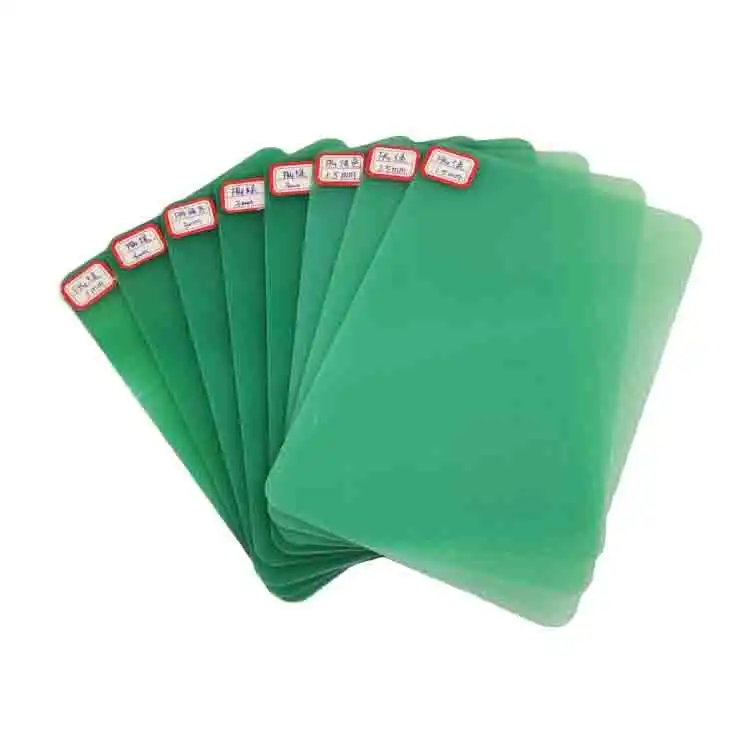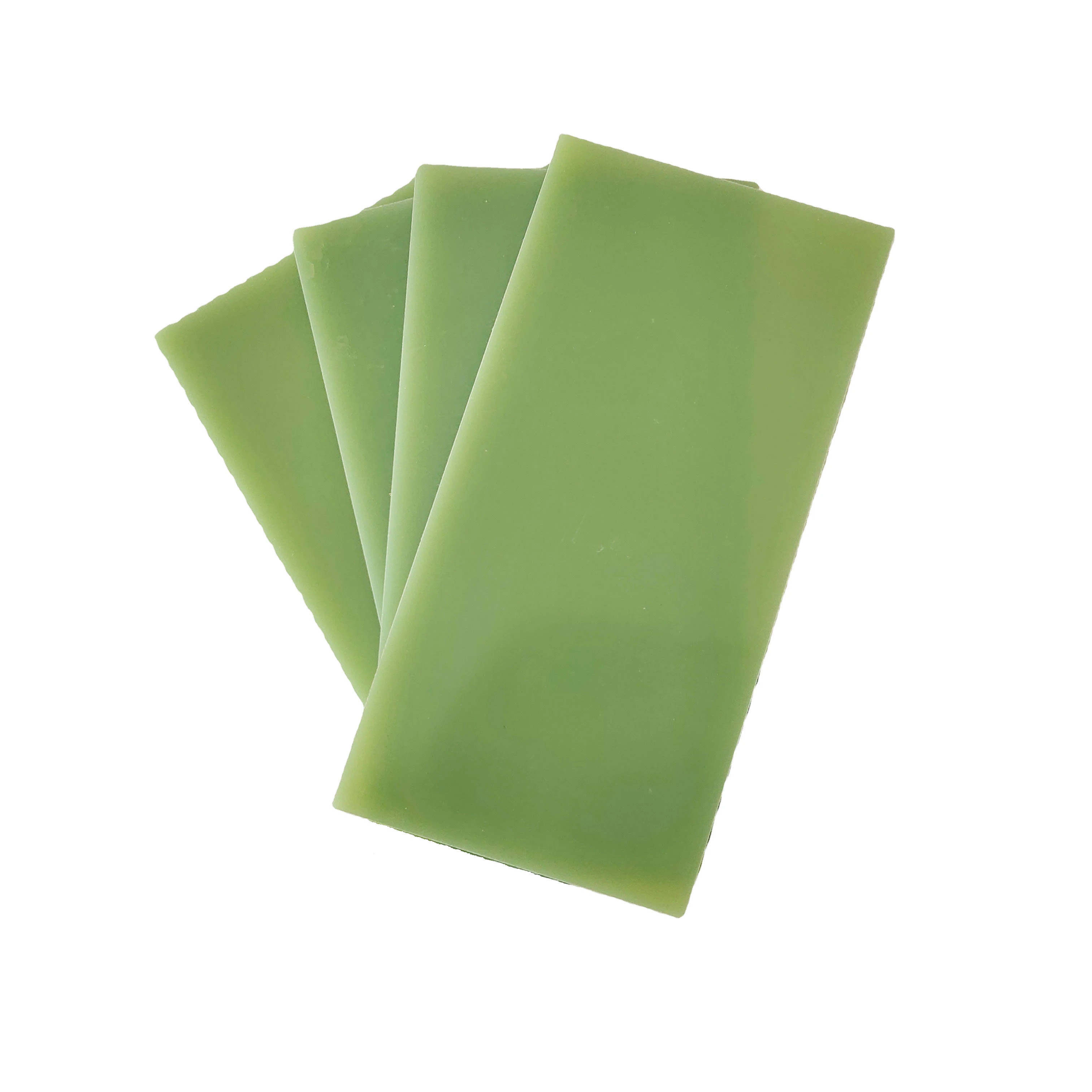How to Select the Right FR4 Glass Epoxy Sheet for Your Needs?
2025-03-21 17:03:28
Selecting the right FR4 glass epoxy sheet for your needs involves considering several key factors. Begin by evaluating the specific requirements of your project, including thermal resistance, electrical properties, and mechanical strength. Next, examine the sheet's thickness, size, and grade to ensure compatibility with your application. Consider the manufacturer's reputation and certifications to guarantee quality and reliability. Additionally, assess the sheet's flame retardancy, moisture resistance, and dimensional stability. Compare prices from multiple suppliers to find the best value without compromising on quality. Lastly, consult with industry experts or the manufacturer's technical team for personalized recommendations tailored to your unique needs. By carefully weighing these factors, you can confidently choose the optimal FR4 glass epoxy sheet for your project.
Understanding FR4 Glass Epoxy Sheet Properties
Composition and Manufacturing Process
FR4 glass epoxy sheets are composite materials consisting of woven fiberglass cloth impregnated with epoxy resin. The manufacturing process involves layering these materials and subjecting them to heat and pressure. This results in a robust, flame-retardant material with excellent electrical insulation properties. The "FR" in FR4 stands for "flame retardant," indicating its ability to self-extinguish when exposed to fire. The number "4" represents the specific formulation of the epoxy resin used in the material.
Electrical Properties
One of the primary reasons for choosing FR4 glass epoxy sheets is their superior electrical properties. These sheets boast high dielectric strength, low dielectric constant, and excellent insulation resistance. The dielectric strength measures the material's ability to withstand electric fields without breaking down, while the dielectric constant indicates how much energy can be stored in the material. FR4 sheets also exhibit low dissipation factor, which minimizes energy loss in high-frequency applications. These properties make FR4 glass epoxy sheets ideal for use in printed circuit boards (PCBs) and various electronic components.
Mechanical and Thermal Characteristics
FR4 glass epoxy sheets possess impressive mechanical and thermal characteristics. They demonstrate high flexural and tensile strength, allowing them to withstand significant physical stress without deformation. The material's rigidity and dimensional stability ensure that it maintains its shape and size even under varying environmental conditions. Thermally, FR4 sheets exhibit low thermal expansion and can withstand high temperatures without degradation. This thermal stability is crucial in applications where components may generate heat during operation. The combination of these properties makes FR4 glass epoxy sheets versatile materials suitable for a wide range of industrial and electronic applications.
Factors to Consider When Choosing FR4 Glass Epoxy Sheets
Grade and Specifications
When selecting FR4 glass epoxy sheets, it's essential to consider the grade and specifications that best suit your application. FR4 sheets come in various grades, each with specific properties tailored to different uses. For instance, high-frequency applications may require a grade with lower dielectric constant and dissipation factor. The specifications you should examine include thickness, which can range from thin flexible sheets to thick rigid boards, and sheet size, which affects how efficiently you can utilize the material. Pay attention to the glass transition temperature (Tg), as it indicates the point at which the material begins to soften and lose its rigid properties. Higher Tg values are desirable for applications exposed to elevated temperatures.
Flame Retardancy and Safety Standards
The flame retardant properties of FR4 glass epoxy sheets are crucial for ensuring safety in electronic and industrial applications. When selecting a sheet, verify that it meets the required flame retardancy standards for your specific use case. Common standards include UL94 V-0, which indicates that the material self-extinguishes within 10 seconds of vertical flame application. Additionally, consider whether the sheet complies with RoHS (Restriction of Hazardous Substances) regulations, particularly if you're manufacturing products for international markets. Some applications may require halogen-free FR4 sheets to meet stringent environmental and safety standards. Always ensure that the chosen FR4 glass epoxy sheet aligns with the safety regulations and industry standards relevant to your project.
Environmental Resistance and Durability
The ability of FR4 glass epoxy sheets to withstand various environmental conditions is a critical factor in their selection. Consider the sheet's resistance to moisture absorption, as excessive moisture can affect electrical properties and lead to delamination. For applications exposed to harsh chemicals or solvents, verify the chemical resistance of the FR4 sheet. UV resistance is another important aspect, particularly for outdoor applications or components exposed to sunlight. The material's ability to maintain its properties over time, known as aging resistance, is crucial for long-term reliability. Additionally, assess the sheet's performance under extreme temperatures and thermal cycling, especially if your application involves exposure to significant temperature fluctuations. Choosing an FR4 glass epoxy sheet with appropriate environmental resistance ensures the longevity and reliability of your final product.

Applications and Industry-Specific Considerations
Electronics and PCB Manufacturing
In the realm of electronics and PCB manufacturing, FR4 glass epoxy sheets reign supreme as the material of choice. Their exceptional electrical insulation properties, coupled with mechanical strength and thermal stability, make them ideal for creating reliable circuit boards. When selecting FR4 sheets for PCB applications, pay close attention to the copper cladding options available. Single-sided, double-sided, or multilayer configurations cater to different circuit complexities. The sheet's thickness and dielectric properties should align with the intended operating frequency of the circuit. For high-speed digital applications, consider FR4 sheets with controlled impedance characteristics. In the case of flexible PCBs, specialized grades of FR4 that offer increased flexibility without compromising electrical performance may be necessary. Always ensure that the chosen FR4 sheet meets the specific requirements of your PCB design, including factors like signal integrity and thermal management.
Aerospace and Defense Industries
The aerospace and defense industries demand materials that can withstand extreme conditions while maintaining consistent performance. FR4 glass epoxy sheets used in these sectors often require enhanced specifications. Look for sheets with higher temperature resistance and improved dimensional stability to cope with the rigors of aerospace applications. Flame retardancy is paramount, so sheets meeting stringent fire safety standards are essential. Consider FR4 variants with low outgassing properties for space applications to prevent contamination of sensitive equipment. In defense applications, FR4 sheets may need to meet specific military standards (MIL-SPEC) for reliability and performance. The ability to withstand vibration, shock, and extreme temperature variations is crucial. When selecting FR4 sheets for aerospace and defense projects, prioritize materials that have undergone extensive testing and certification processes to ensure they meet the industry's exacting standards.
Industrial and Automotive Applications
FR4 glass epoxy sheets find extensive use in industrial and automotive applications due to their versatility and robust properties. In industrial settings, FR4 sheets are often employed in control panels, switchgear, and insulation components. When selecting sheets for these applications, consider factors such as arc resistance and tracking resistance, especially for high-voltage environments. In the automotive industry, FR4 sheets are used in various electronic control units and sensor assemblies. For these applications, look for FR4 variants that offer enhanced vibration resistance and can withstand the harsh under-hood environment. The material's ability to maintain its properties over a wide temperature range is crucial for automotive use. In both industrial and automotive contexts, consider FR4 sheets with improved chemical resistance to withstand exposure to oils, fuels, and other potentially corrosive substances. Always ensure that the selected FR4 glass epoxy sheet complies with relevant industry standards and regulations specific to industrial and automotive applications.
Conclusion
Selecting the right FR4 glass epoxy sheet is a crucial decision that can significantly impact the success of your project. By understanding the material's properties, considering key factors such as grade, specifications, and environmental resistance, and aligning your choice with industry-specific requirements, you can make an informed decision. Remember to prioritize quality, reliability, and compliance with relevant standards. The versatility of FR4 glass epoxy sheets makes them invaluable across various industries, from electronics to aerospace and beyond. By carefully evaluating your needs and matching them with the appropriate FR4 sheet characteristics, you can ensure optimal performance, durability, and safety in your applications.
Contact Us
Ready to find the perfect FR4 glass epoxy sheet for your project? Our team of experts is here to help you make the best choice. Contact us today at info@jhd-material.com for personalized assistance and to explore our wide range of high-quality FR4 glass epoxy sheets tailored to your specific needs.
References
1. Johnson, R. M. (2019). Advanced Composite Materials: Properties and Applications. Materials Science Press.
2. Smith, A. K., & Brown, L. E. (2020). Handbook of FR4 Glass Epoxy Laminates in Electronics. Electronic Materials Association.
3. Thompson, C. D. (2018). Flame Retardancy in Polymer Composites: Principles and Applications. Fire Safety Institute.
4. Liu, Y., & Zhang, X. (2021). High-Performance PCB Materials: From Selection to Implementation. Circuit Design Today.
5. Anderson, P. R. (2017). Aerospace Materials: Challenges and Innovations. Aerospace Engineering Review.
6. Garcia, M. S., & Lee, K. H. (2022). Automotive Electronics: Materials and Manufacturing Processes. Automotive Technology Press.







